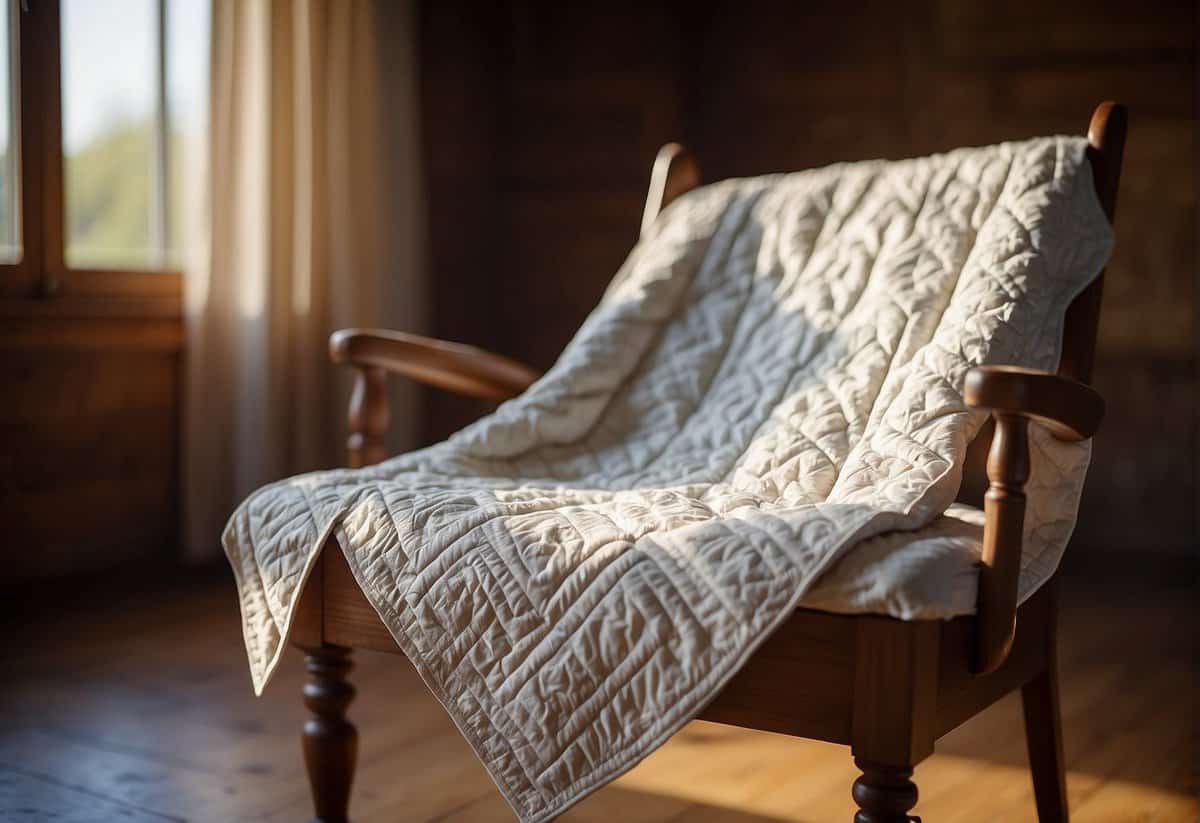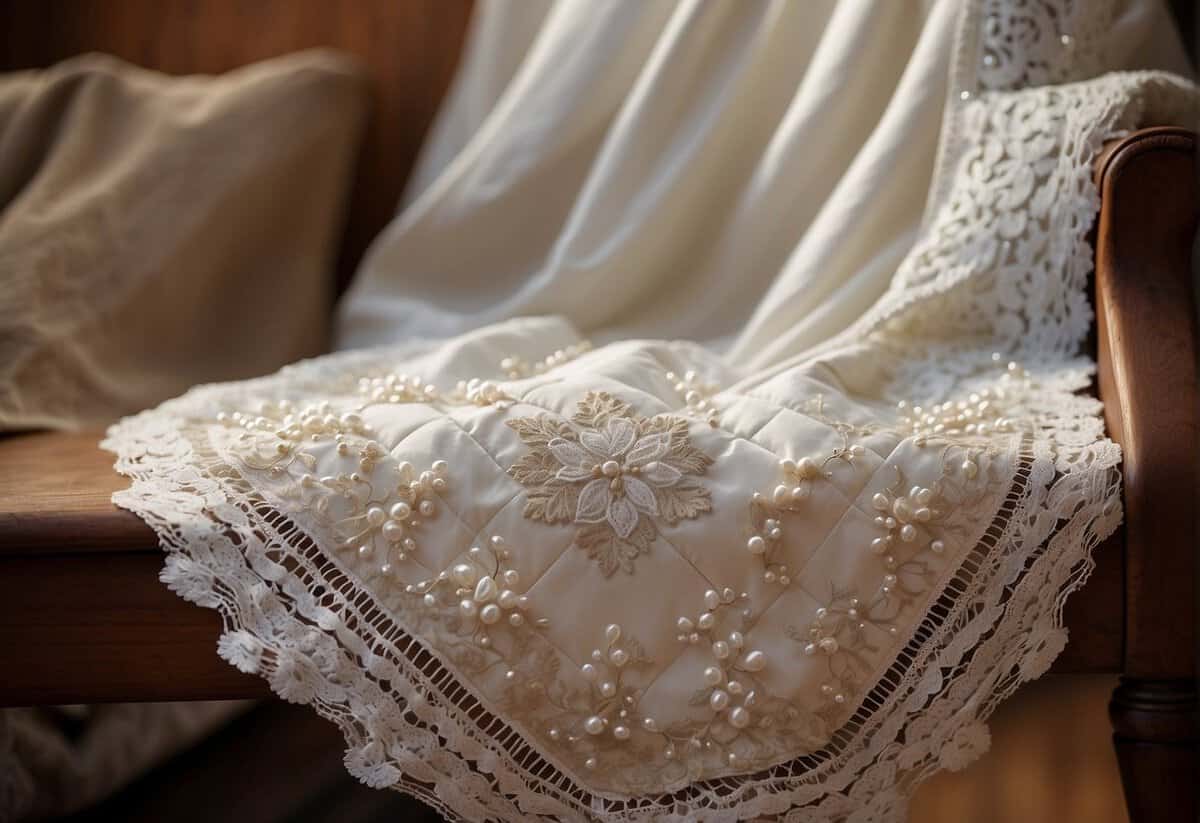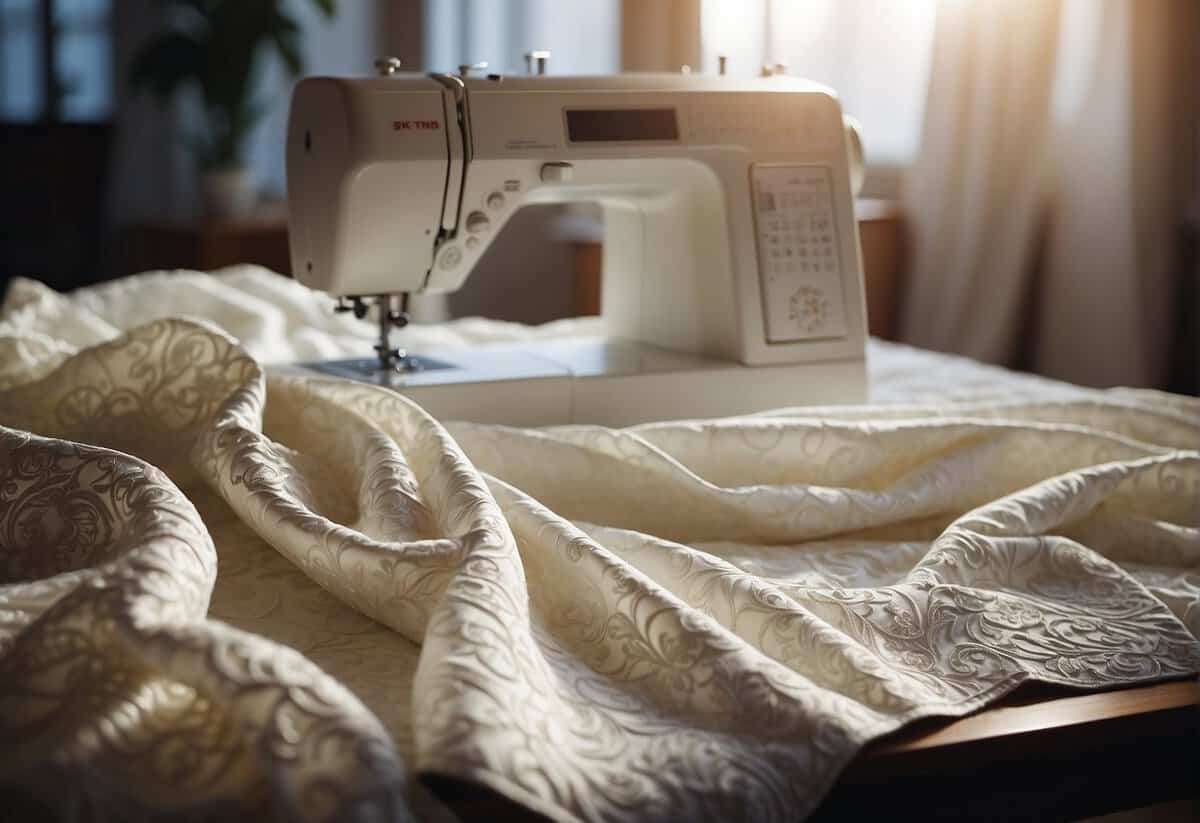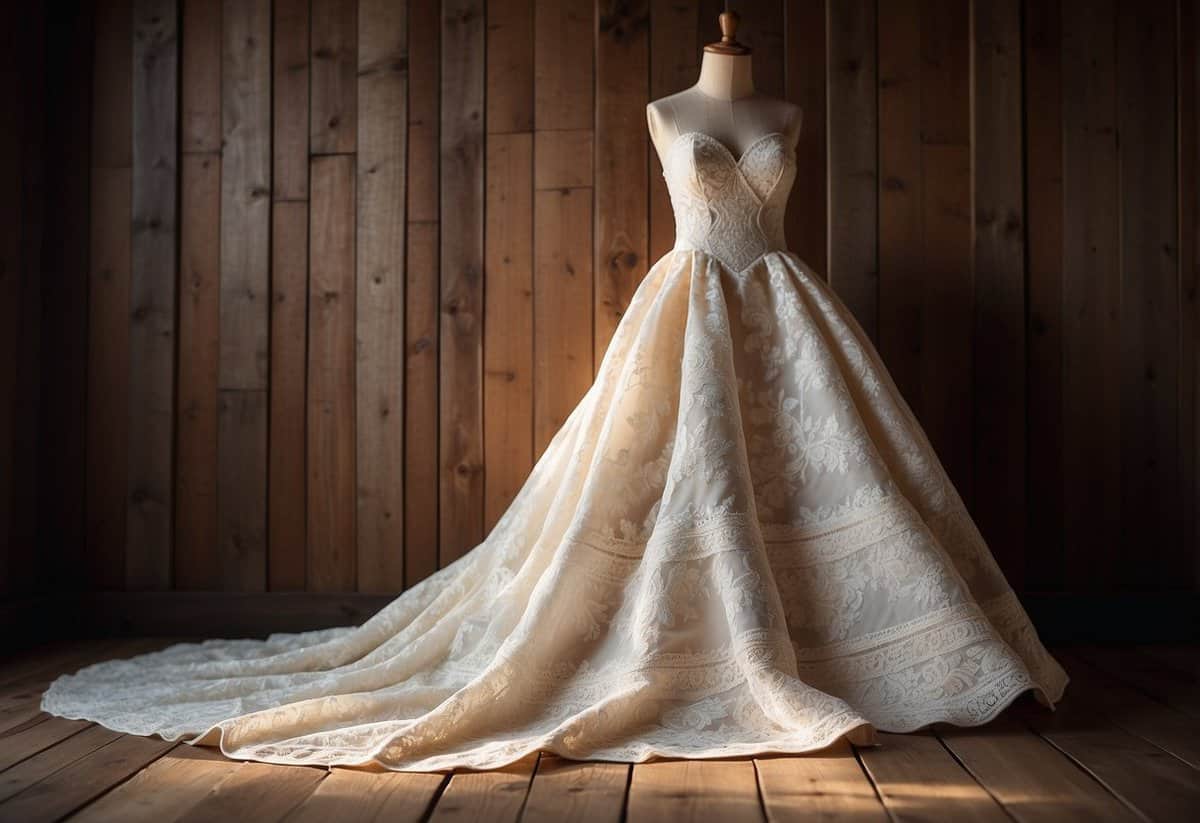Wedding Dress Quilt Ideas: Crafting Keepsakes from Your Special Day
Transforming your treasured wedding dress into a quilt offers a wonderful opportunity to preserve your cherished memories in a practical and decorative item. Quilting a wedding dress not only commemorates your special day but also gives you a unique family heirloom that can be passed down through generations. Whether it’s displayed in your home or used on special occasions, a wedding dress quilt is a heartfelt emblem of your union that embodies the joy of your wedding day.

To ensure that your wedding dress quilt resonates with personal significance, considering the right fabrics, patterns, and customization techniques is key. By selecting materials that complement the original dress and utilizing quilt patterns that speak to your aesthetic, you’re able to create a piece that truly reflects your bond. Moreover, with careful sewing and assembly, your quilt will not only tell your love story but also stand the test of time.
Key Takeaways
- Wedding dress quilts allow you to cherish your bridal gown as a functional keepsake.
- Thoughtful selection of fabrics and patterns ensures your quilt is as distinctive as your big day.
- Expert sewing techniques contribute to creating a durable treasure for future celebrations.
Choosing the Right Fabrics

Your wedding dress quilt will be a cherished keepsake, so it’s important to choose fabrics that reflect its sentimental value and stand the test of time. Let’s explore the best materials for your project.
Lace Selection
Lace adds a touch of elegance and carries a timeless appeal in wedding dress quilts. Opt for high-quality lace that’s made of silk or cotton for its intricate patterns and durability. Remember, the type of lace you choose will greatly affect the overall look and value of your quilt.
Satin and Silk Varieties
To bring a luxurious sheen to your quilt, consider satin and silk. Both fabrics drape beautifully and add a rich texture. However, because they come in various weights and qualities, you should select a heavier silk like Silk Mikado for sturdiness, or a glossy satin that highlights the quilt’s design without overpowering it.
Incorporating Tulle and Organza
For a softer, ethereal quality, incorporate tulle or organza. These lightweight fabrics can create volume and add dimension to your quilt. Keep in mind, though, that they’re delicate; organza is a bit stiffer and can provide a more contemporary look, while tulle gives a softer outline and is forgiving in hiding seams or imperfections.
Quilt Patterns and Techniques

When creating a quilt from a wedding dress, selecting the right pattern and mastering various techniques is crucial. You’ll have the opportunity to choose from classic patterns with historical significance or opt for modern adaptations that add a contemporary twist. Moreover, understanding methods like paper piecing can enhance your quilting experience and outcome.
Classic Wedding Quilt Patterns
The Double Wedding Ring is a timeless choice amongst wedding quilt patterns, symbolizing love and unity. Typically, you’d use interlocking rings to design this pattern, which can be challenging but well worth the effort for its sentimental value. Another beloved pattern is the Cathedral Window, offering an elegant and intricate look that mimics stained glass, often using fabric from the dress itself for a truly personal touch.
- Signature Quilt: Guests sign squares at the wedding, which then become part of the quilt.
- Dresden Plate: Features a series of petal-like wedges, evocative of a blooming flower.
Modern Adaptations
In contrast, contemporary wedding quilts might incorporate bold geometric shapes or minimalist designs that reflect current trends. Improvisational piecing is a technique where you piece together fabric scraps without a fixed pattern, which results in a unique, modern artwork. A quilt with a photo transfer technique, where you print photos onto fabric, can also add a personal and modern touch.
- Pixel Quilt: Replicate a photo with fabric squares.
- Appliqué Monogram: Customize with the couple’s initials.
Paper Piecing Methodology
The paper piecing technique, also known as foundation paper piecing, allows for precision and is particularly useful for complex patterns or shapes. When working on a Wedding Ring quilt pattern, paper piecing helps in achieving the sharp points and curves characteristic of the design. While it may seem daunting at first, this technique can make sewing intricate patterns like the Mariner’s Compass or Lone Star more manageable.
- Start with simple shapes.
- Use a sewing machine for greater accuracy.
Customization Ideas

When you transform your wedding dress into a quilt, the essence of your personal love story can be captured with expressive custom details. Here are a brief run-through of the details you can add:
Personalized Embroidery
Embroidery can bring a personal touch to your quilt. You might consider adding your initials, or perhaps the date of your wedding interwoven with delicate floral designs. This bespoke addition can echo the sentiments of your special day.
Unique Beading and Embellishments
Incorporate some of your wedding dress’ original beading and embellishments for a unique texture and sparkle. Reusing these elements not only recaptures the gown’s charm but also adds a dazzling three-dimensional aspect to your quilt.
Monogramming and Dates
With monogramming, feature your shared surname in an elegant font or include significant dates such as your wedding and engagement. These eloquent touches make your quilt a narrative tapestry, chronicling your journey together.
Sewing and Assembly Tips

When it comes to turning your cherished wedding dress into a wedding dress quilt, precision in sewing and assembly is vital. You’ll want to ensure every stitch honors the original garment while creating a new, functional piece of art.
Preparing the Quilt Top
Before diving into the sewing process, you need to prepare your quilt top properly. Make sure you iron all the pieces flat, removing any wrinkles or creases that could interfere with your sewing. Use quilting pins liberally to secure the pieces; this will help maintain the integrity of your design as you sew. Cutting and piecing are foundational, so take your time to ensure accuracy and consistency in your blocks.
Selecting the Right Thread
The thread you choose for assembling your quilt top can make a tremendous difference in both the appearance and durability of your quilt. Always opt for high-quality thread that matches the weight and fiber content of your fabric. If your wedding dress was made of silk, for example, a silk thread could be an excellent choice for a harmonious finish.
Quilting with a Sewing Machine
A reliable sewing machine is your best friend in this process. Begin by setting up your machine with a new needle—this ensures a sharp point for the most precise stitching. For stability and tension control, use a walking foot attachment if you have one. Remember to remove pins as you come to them to avoid damaging your machine. When you’re ready to quilt the layers together, start from the center and work your way out to prevent bunching.
Preservation and Usage

Transforming your cherished wedding dress into a functional item like a tote bag or preserving it as a quilt are creative ways to keep memories alive. Both options allow you to honor a significant garment while incorporating it into your daily life or saving it as a family heirloom.
Creating a Quilting Tote Bag
Your wedding dress can live on in a new, practical form as a quilting tote bag. By carefully deconstructing the dress and using the fabric to create a tote, you’re able to carry a piece of your special day wherever you go. Here’s how to start:
- Select the Fabric: Identify which parts of the dress you want to feature, such as lace or satin sections.
- Design Your Tote: Outline the size and shape. Will you include pockets using the beaded parts?
- Sewing: Assemble your tote bag, reinforcing the seams to handle everyday use.
Remember, this tote bag will become a conversation piece, so design it with pride!
Care Instructions for Heirlooms
When you transform your wedding dress into a wedding dress quilt, you’re not just making an ordinary blanket; you’re crafting a future family heirloom. To ensure longevity:
- Washing: Hand wash or use a gentle cycle with appropriate detergents.
- Drying: Avoid machine drying. Air dry your quilt instead.
- Storage: Store in a cool, dry place away from direct sunlight.
Labeling: Consider adding a label with the wedding date and names, encapsulating the quilt’s story for generations to come.

